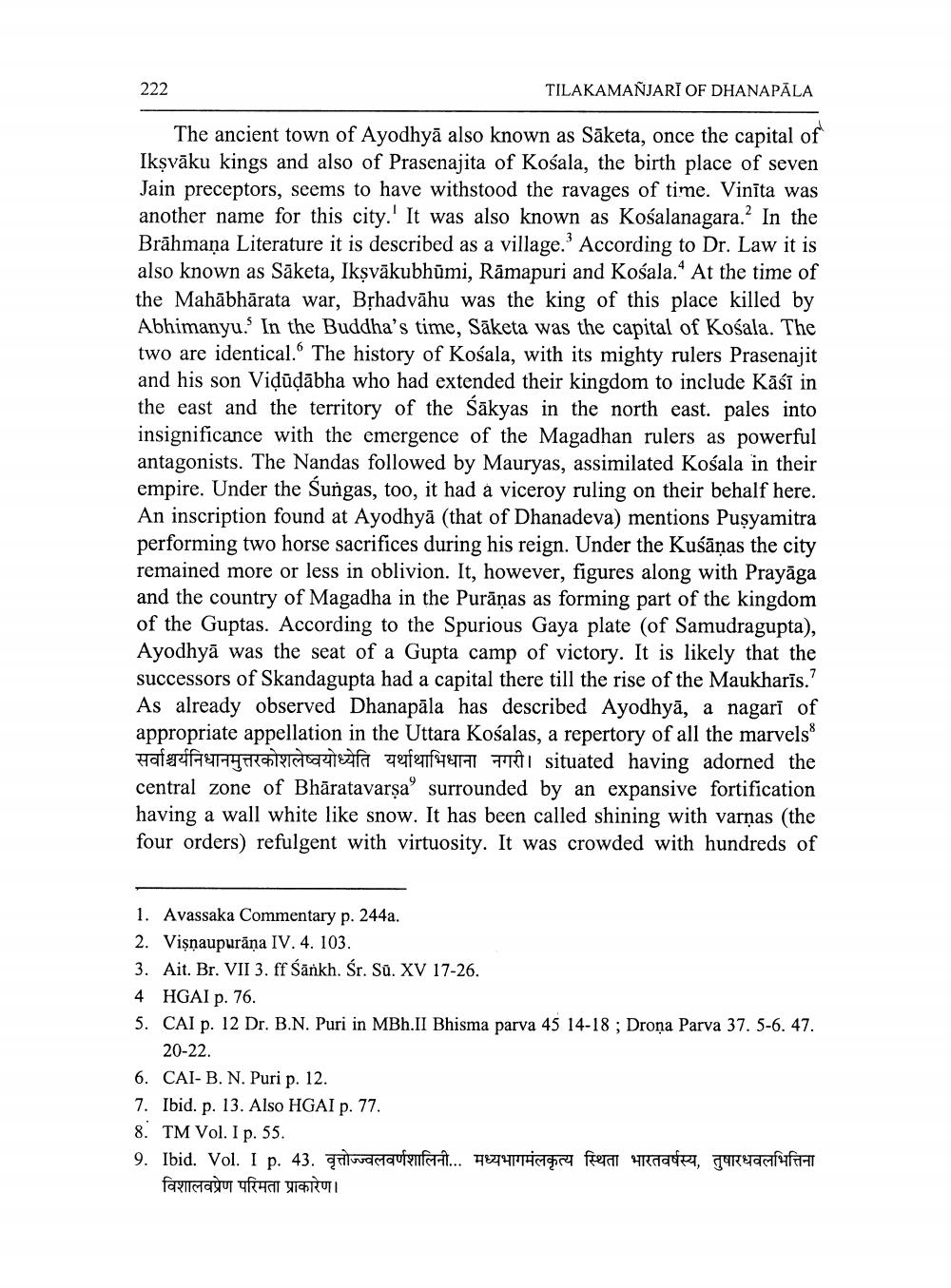________________
222
TILAKAMAÑJARĪ OF DHANAPĀLA
The ancient town of Ayodhyā also known as Sāketa, once the capital of Ikşvāku kings and also of Prasenajita of Kośala, the birth place of seven Jain preceptors, seems to have withstood the ravages of time. Vinīta was another name for this city. It was also known as Kosalanagara.? In the Brāhmaṇa Literature it is described as a village. According to Dr. Law it is also known as Sāketa, Ikşvākubhūmi, Rāmapuri and Kośala." At the time of the Mahābhārata war, Bșhadvāhu was the king of this place killed by Abhimanyu.' In the Buddha's time, Sāketa was the capital of Košala. The two are identical. The history of Kośala, with its mighty rulers Prasenajit and his son Viļūļābha who had extended their kingdom to include Kāśī in the east and the territory of the sākyas in the north east. pales into insignificance with the emergence of the Magadhan rulers as powerful antagonists. The Nandas followed by Mauryas, assimilated Kośala in their empire. Under the Sungas, too, it had a viceroy ruling on their behalf here. An inscription found at Ayodhyā (that of Dhanadeva) mentions Pusyamitra performing two horse sacrifices during his reign. Under the Kuśāņas the city remained more or less in oblivion. It, however, figures along with Prayāga and the country of Magadha in the Purāṇas as forming part of the kingdom of the Guptas. According to the Spurious Gaya plate (of Samudragupta), Ayodhyā was the seat of a Gupta camp of victory. It is likely that the successors of Skandagupta had a capital there till the rise of the Maukharīs.? As already observed Dhanapāla has described Ayodhyā, a nagarī of appropriate appellation in the Uttara Kośalas, a repertory of all the marvels Hafsteifur ERCATCH za 9 9771 frati situated having adorned the central zone of Bhāratavarşa surrounded by an expansive fortification having a wall white like snow. It has been called shining with varnas (the four orders) refulgent with virtuosity. It was crowded with hundreds of
1. Avassaka Commentary p. 244a. 2. Vişnaupurāna IV. 4. 103. 3. Ait. Br. VII 3. ff Sānkh. Śr. Sū. XV 17-26. 4 HGAI p. 76. 5. CAI p. 12 Dr. B.N. Puri in MBh.II Bhisma parva 45 14-18 ; Drona Parva 37. 5-6. 47.
20-22. 6. CAI B. N. Puri p. 12. 7. Ibid. p. 13. Also HGAI p. 77. 8. TM Vol. I p. 55. 9. Ibid. Vol. I p. 43. aaloudsaufenfstet... FETTİtti freat wraak, ReadHAT
विशालवप्रेण परिमता प्राकारेण।




